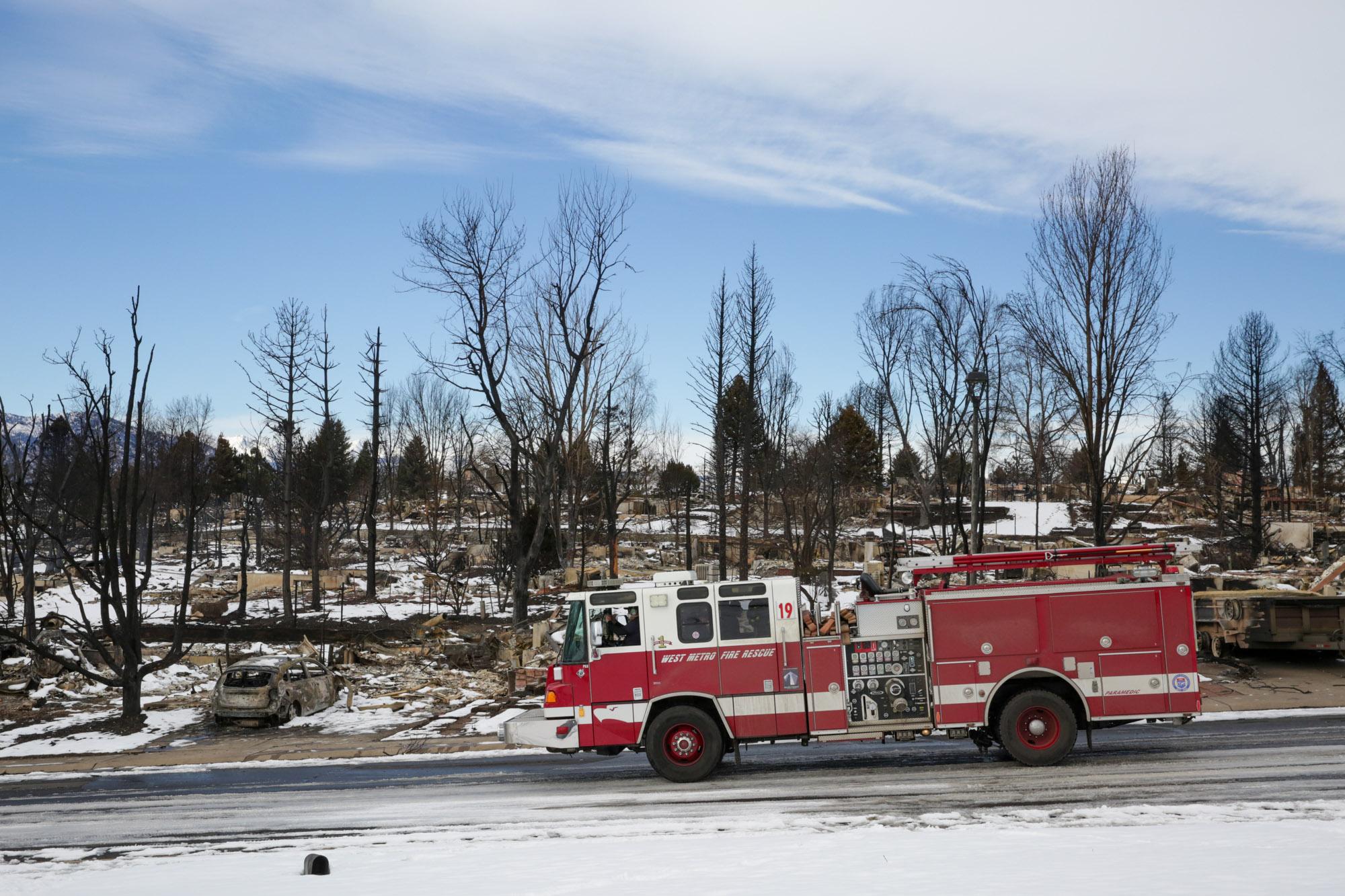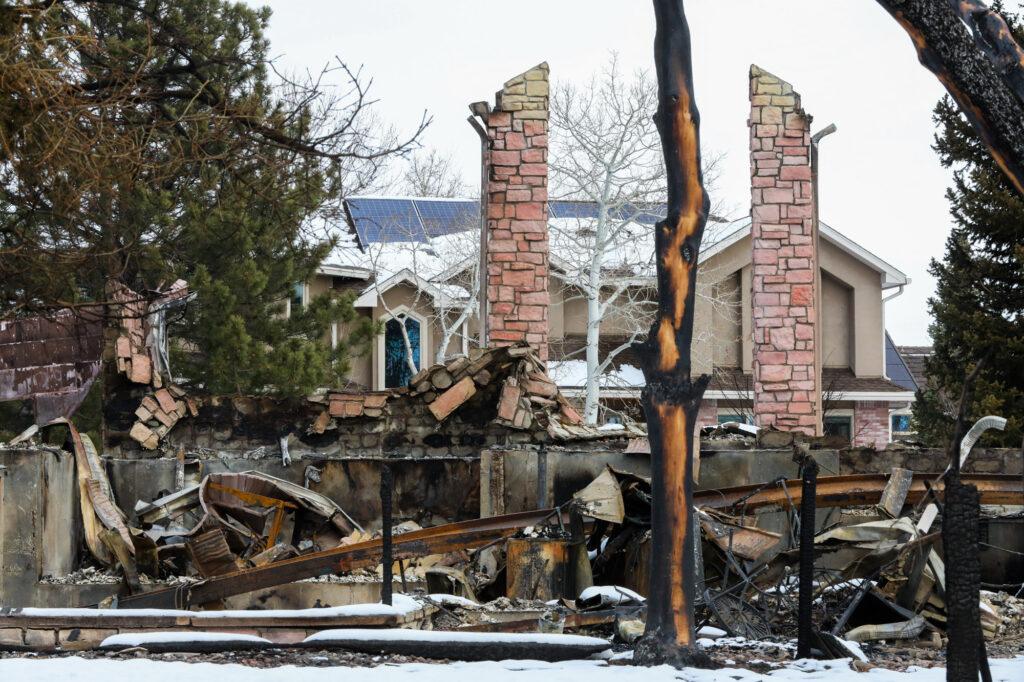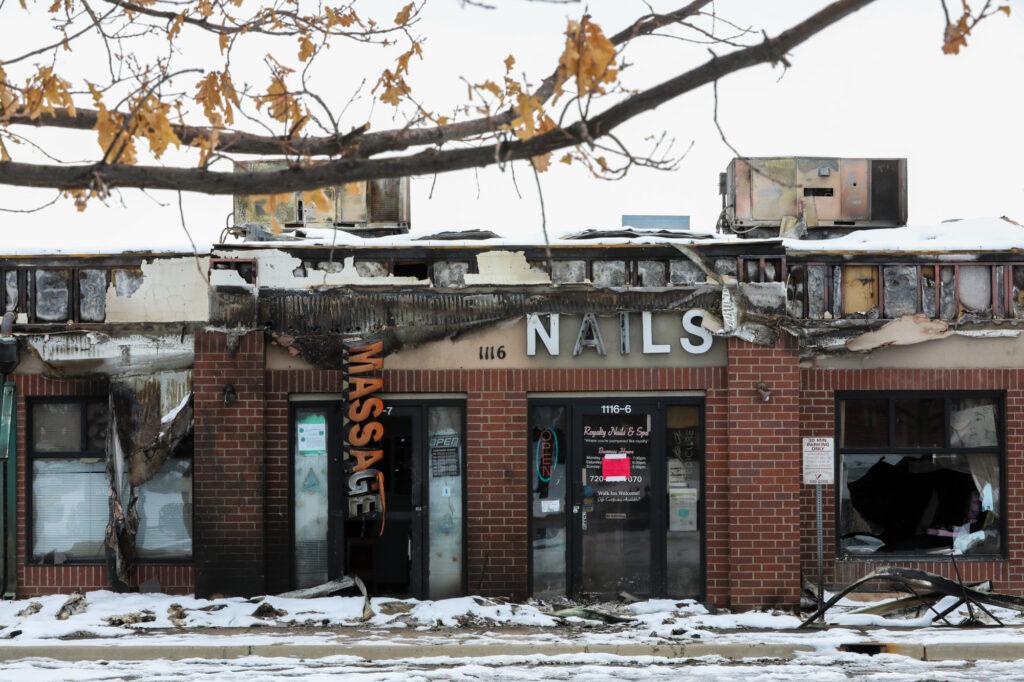
Winds gusting at 100 mph thrust flames from grassy fields toward neighborhoods. Thick, gray smoke clouded sunny skies.
Rapidly deteriorating weather conditions made it impossible for helicopters and air tankers to fly over the Marshall fire and assist overwhelmed ground crews.
Days after the most destructive fire in Colorado history, fire officials and land managers described a situation that quickly moved from trying to beat the flames to evacuating tens of thousands of people from the inferno’s path.
“The fire moved so quickly, everybody just went into kind of an all-hands-on-deck mode focused on priorities of life safety, for the public and the firefighters,” said Vaughn Jones, the chief of wildland fire management for Colorado’s Division of Fire Prevention and Control.
CPR News made multiple attempts to interview firefighters involved in the initial encounter with the Marshall fire.
David Boyd with the U.S. Forest Service, a spokesperson for the fire’s incident management team, said firefighters were not available for interviews while officials investigate its cause.

The Marshall fire quickly grew out of control
Local fire departments are usually the first to arrive at a fire, Jones said. If it becomes too large for them to control, commanders request additional resources from the county, followed by the state.
On the morning of Dec. 30, there was no time to waste. By the time a firefighter requested additional units, the Marshall fire was already headed toward homes, according to emergency dispatch audio.
“In extreme wind conditions like you’re talking about, you can’t go direct. The heat and the smoke are just too intense,” said Dave Beebe, the fire chief for Mountain View Fire and Rescue, the first agency to encounter the fire. Beebe was in Oregon when the Marshall fire broke out.
“You can’t even really dig a line because it will just blow over the line,” he said. “So, you try to work from the sides from the fires, what we call the flanks, and pinch the head off.”
With flames driving toward neighborhoods and shopping centers, attempting to extinguish the fire from the ground was impractical, he said.
Firefighters wanted to know if there were helicopters or air tankers available to drop water or fire retardant from above, Jones said, but the high winds made it too dangerous to fly.
“It was just obvious and clear-cut that it wasn’t going to happen, unfortunately, that day,” Jones said.
The firefighting effort quickly turned into a mission to evacuate Superior and Louisville.
Twenty minutes after requesting help from additional fire trucks and personnel, a firefighter asked emergency dispatchers to issue a reverse 911 call alerting residents to evacuate. Families dashed out of their homes and businesses and piled into their cars, driving through the smoke to safety.
“I’m very, very proud of my organization and the way that my people stepped up to perform in very, very demanding conditions,” Beebe said.
Two people were reported missing after the Marshall fire. Investigators believe they found the remains of one of them. More than 1,000 homes burned down in the fire and more than a hundred others were damaged, according to the most recent damage assessment from officials.
Fire officials remain adamant that the weather conditions that day made it impossible to tackle the fire itself — it was too dry, too warm and too windy to stop, they said.

The impact of climate change was undeniable in the Boulder County fires
Regional land managers draw a clear line between the fire and climate change.
“This is a result of climate change,” said Stefan Reinold, the resource manager for parks and open space in Boulder County. “It is impacting communities across the west. This drought and having no snow is outside the norm.”
About a third of the area burned by the Marshall fire covers open space owned by the city of Boulder, said John Potter, the resource manager for the city’s open space department. He said that rising temperatures across the country are worsening similar disasters, including wildfires that ravaged California and Oregon last year.
“All over the place, we’re seeing these situations that are not typical for land managers, it’s not what we’ve seen in the past,” he said.
The speed and destruction of the Marshall fire is cause for land managers and other agencies to rethink how they preserve natural lands and protect the residential communities near them, Potter and Reinold said.
This could mean more prescribed burns to reduce the amount of grass that could fuel future fires, Potter said. Those controlled, intentionally set fires come with their own challenges, including requiring the right conditions to ensure a fire does not grow out of control.
Potter doesn’t think prescribed fires in Boulder County would have offset the power of the high winds that drove the Marshall fire.
“No prescribed burn could’ve prevented what we saw last week,” he said.









